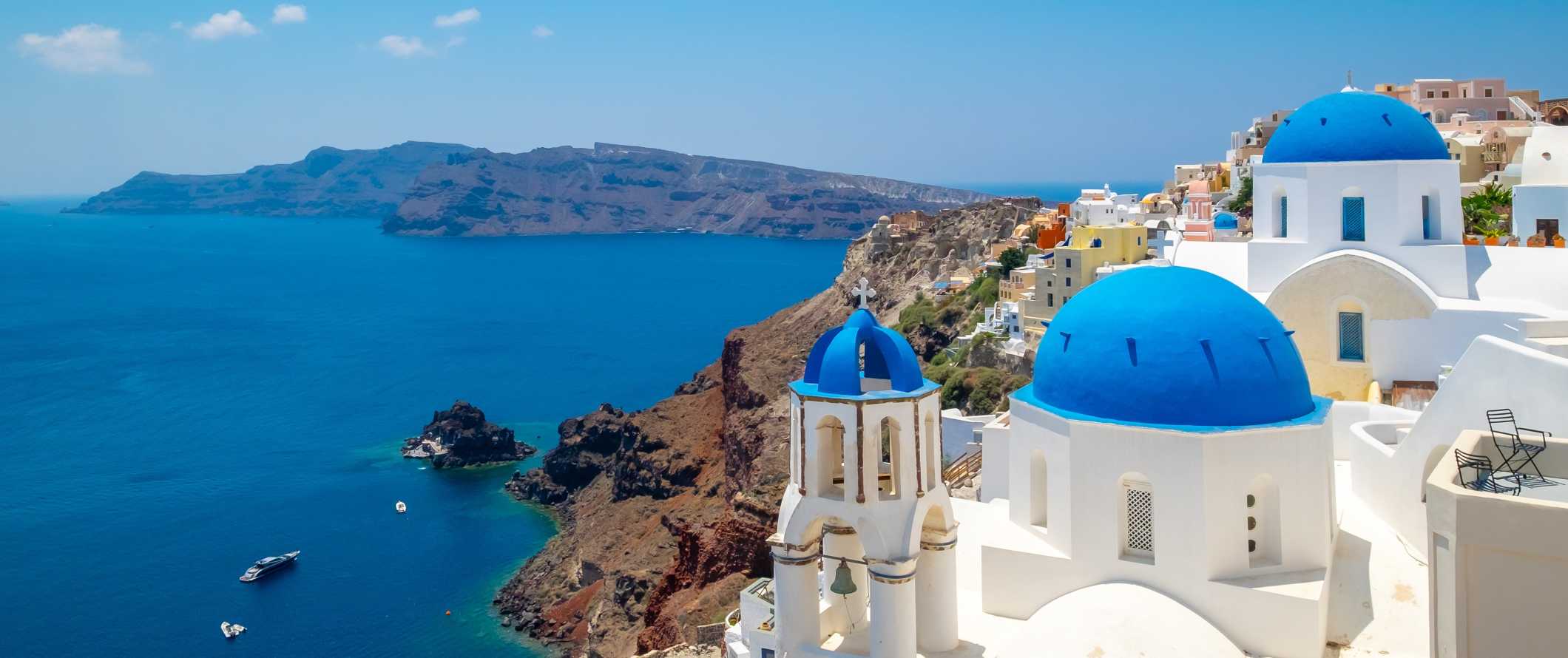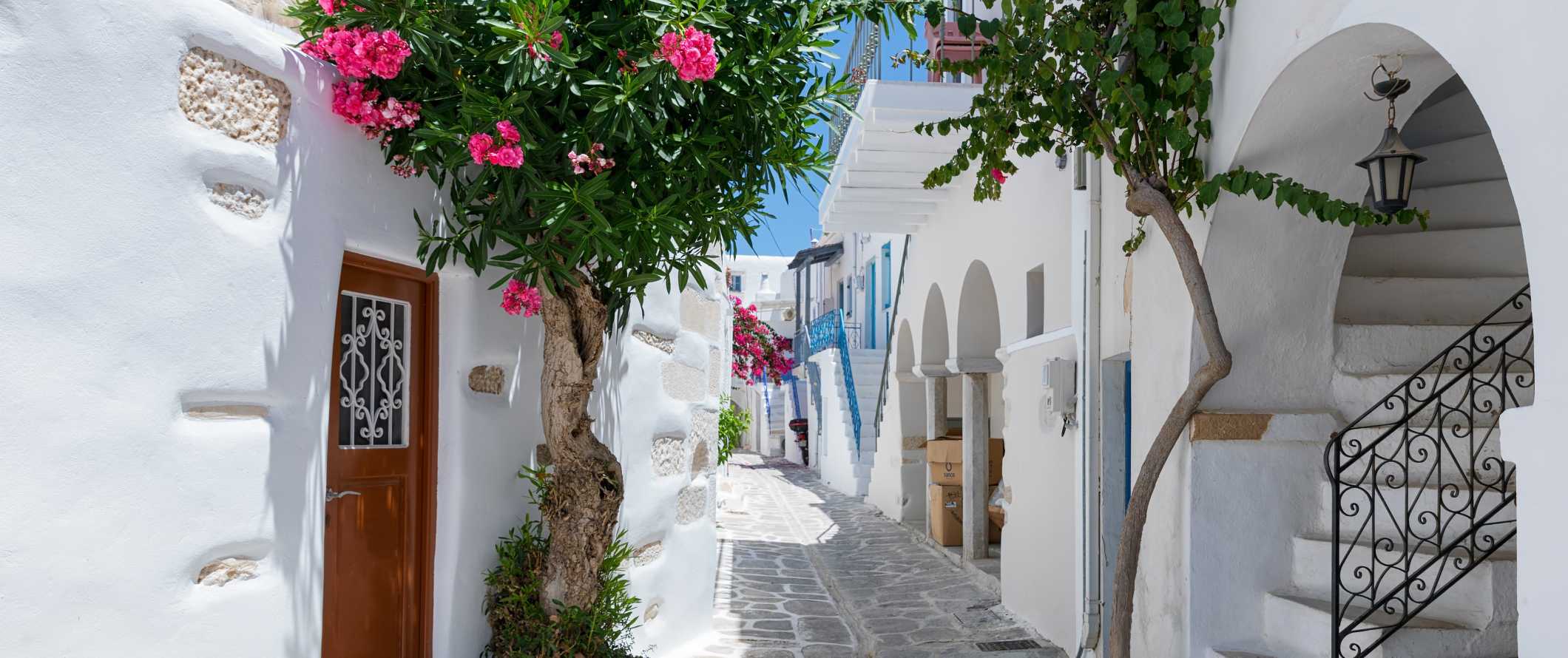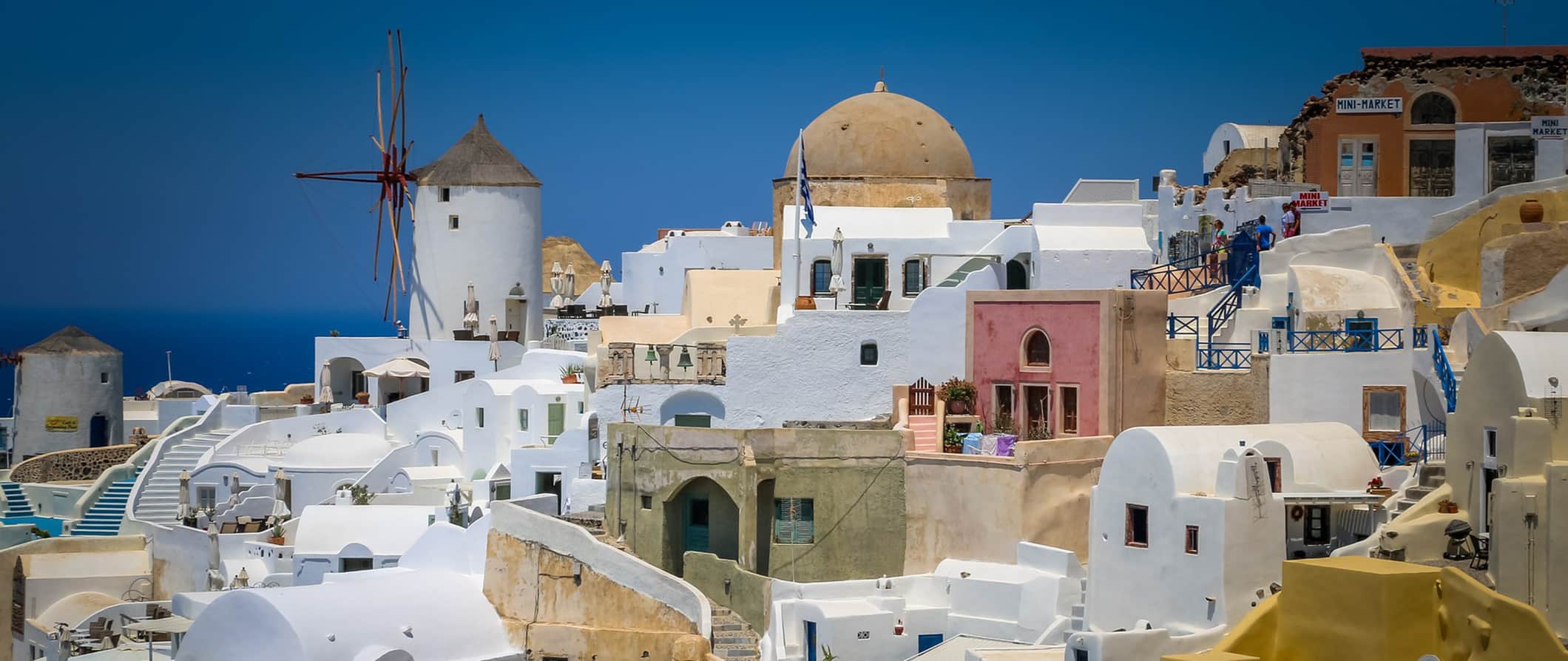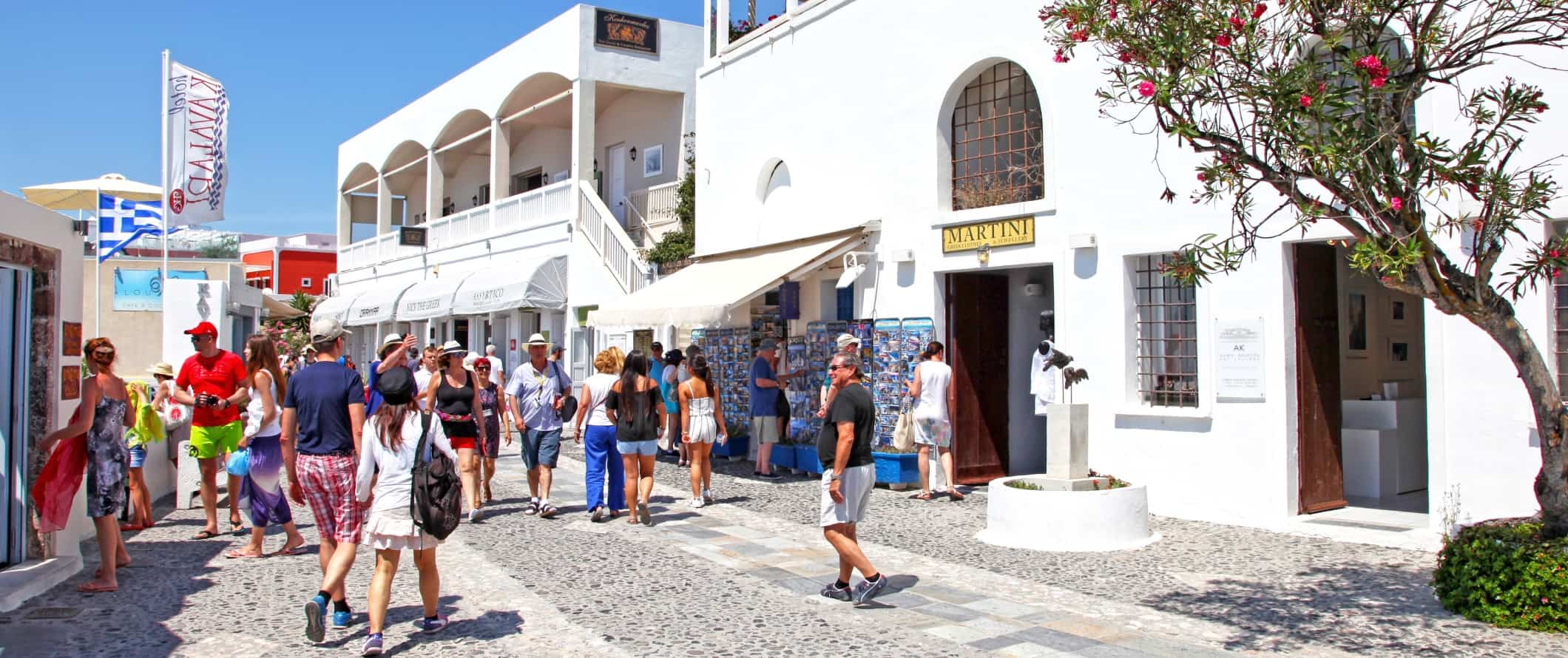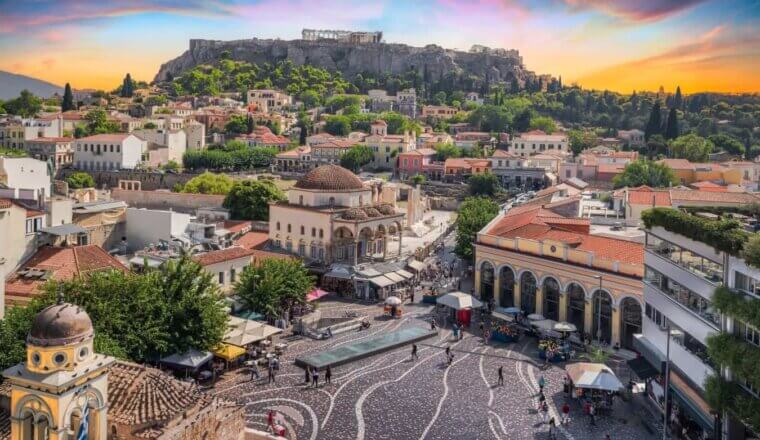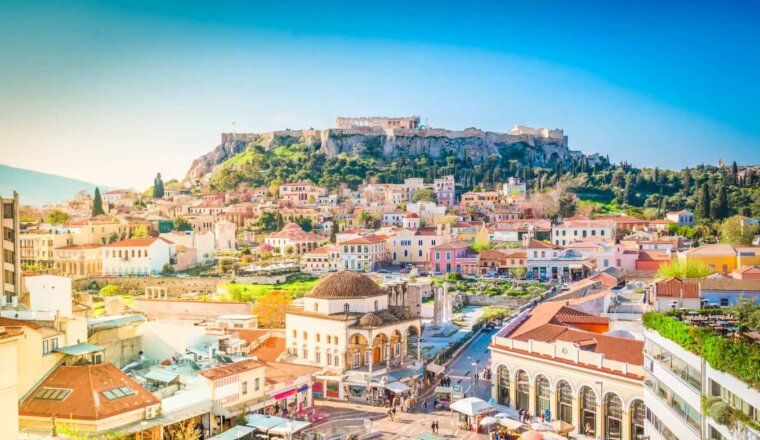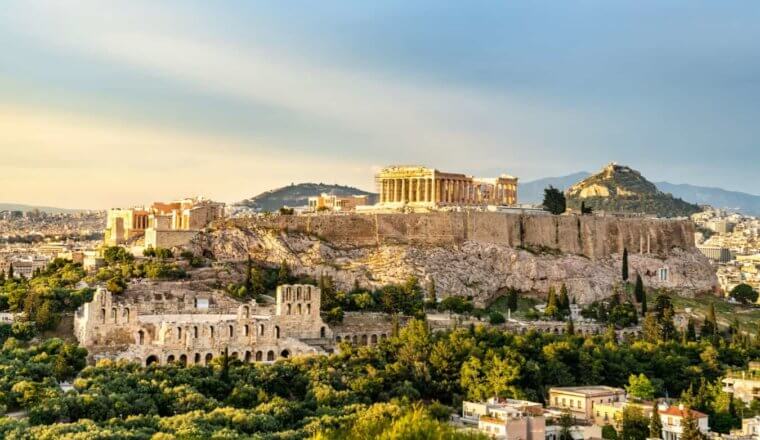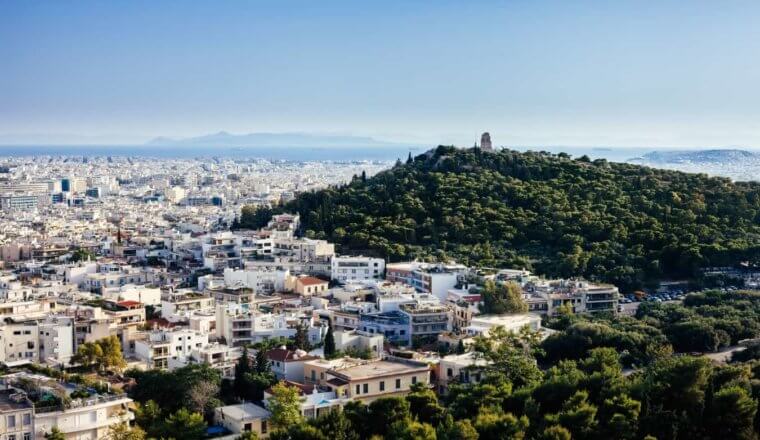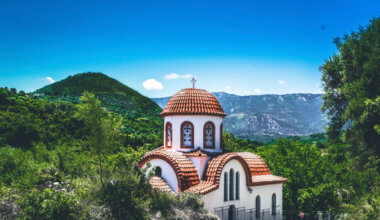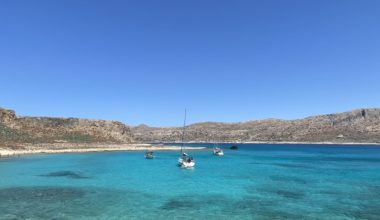Santorini is perhaps the most famous Greek Island. It sees a lot of older tourists and honeymooners (it was made famous as a honeymoon spot by the 1982 movie Summer Lovers), and is a frequent stop for cruise ships.
From its iconic sunsets to its historical ruins to its numerous vineyards, Santorini is a picturesque island with plenty to see and do. While one of Greece’s most popular islands, it’s big enough that you can find quiet places away from the overwhelming crowds.
Moreover, if you visit outside the hectic summer months, you can enjoy this postcard-perfect island without the huge crowds — and pay lower prices in the process.
Personally, this isn’t my favorite island but it’s still worth a visit because it has some of the best wine, views, and activities in the region.
This travel guide to Santorini can help you plan your trip and ensure you make the most out of your time here without breaking the bank!
Table of Contents
Top 5 Things to See and Do in Santorini
1. Spend the day in Oia
The picturesque town of Oia is famous for its white houses, blue-domed churches, and windmills. There’s not much to do but wander around the pedestrianized streets, snap pictures, enjoy an (expensive) drink or meal on the caldera’s edge (Santorini exists on the remnants of a volcano), and watch a spectacular sunset. Keep in mind that as the most visited (and second-largest) town on the island, it can become quite crowded in the summer months.
2. Visit Akrotiri
Akrotiri is a 3,500-year-old town that was one of the most significant Minoan cities and ports in the Aegean Sea. In the 17th century BCE, it was covered in volcanic ash from an eruption, earning Akrotiri the moniker the “Greek Pompeii.” Streets, buildings, stairs, and even second floors of buildings are still in perfect condition. The excavation site is covered by a roofing system, which makes it comfortable to visit in the summer heat. Skip-the-line tickets are 15 EUR.
3. Explore Red Beach
Red Beach is famous for its vivid red volcanic cliff framing the bright blue Mediterranean Sea. I think Santorini’s other beaches are better for swimming and sunbathing, but Red Beach’s natural beauty is definitely worth a quick visit. It’s also a great spot for snorkeling. Located a 20-minute drive from Fira, near Akrotiri, it’s just a short (yet rocky) hike down to the beach.
4. Tour a winery
Santorini’s fertile, volcanic landscape is perfect for growing grapes. The vineyards here are unique: to protect their crops against harsh winds, vine growers wrap the vines into a sort of wreath low to the ground. Most wines are made from the island’s indigenous Assyrtiko grape variety, and Santorini is especially known for its Vinsanto wines. A tour is the best way to learn about the island’s wine production tradition, as well as visit a few different wineries (there are over a dozen). A half-day winery tours start at 150 EUR.
5. See the Santorini Volcano
Santorini’s volcanic eruption in the 17th century BCE was one of the biggest explosions in recorded history. It’s responsible for giving the island its unique caldera shape. Today it is one of only 16 Decade Volcanos in the world (closely monitored active volcanos with a history of destructive eruptions located near densely populated areas). While the active part of the volcano is underwater, you can take a boat trip to walk the surface of the uninhabited black lava islands, Nea Kamenion and Palaia Kameni, and enjoy the latter’s hot springs. Tours begin at 20 EUR while full-day cruises that include volcano hiking and a visit to the hot springs start at 26 EUR.
Other Things to See and Do in Santorini
1. Hang out on the beaches
As far as Greek beaches go, Santorini lacks the idyllic, white sandy beachfront that other islands have. Instead, the beaches here are made up of volcanic rock and pebbles. They’re still perfectly enjoyable though and you’ll find most beaches full of people in the summer. Kamari and Perissa have the most action, especially since the bars and restaurants are right on the water. To escape the crowds, go to Monolithos. You can also head to Ammoudi Bay. It’s not a beach but there are lots of rocks and cliffs you can jump from.
2. Go scuba diving
You probably won’t see a great deal of marine life or coral around Santorini, but the island has tons of shipwrecks. You can dive down about 14 meters (45 ft) and see sunken ships, caves, and endless drop-offs around the caldera. Adiavatous Reef, The Caves, and White Island are some of the most popular dive sites. Scuba diving in Santorini starts at 90 EUR.
3. See the Museum of Prehistoric Thira
Located in Fira, this museum is home to a massive collection of artifacts that were found in the ruins of Akrotiri. Its highlights include wall paintings, pottery, an intricately carved gold ibex figurine (an ibex is a wild mountain goat), and fossilized olive tree leaves dating back to 60,000 BCE. My favorites are the frescoes of blue monkeys, although interestingly enough, there is no evidence of monkeys ever having lived on this island. Admission is 6 EUR.
4. Hike from Fira to Oia
The caldera hike from Fira to Oia is the most popular hike you’ll do in Santorini. It follows the caldera’s edge with sweeping views over the island and the volcano. It’s an easy 10 kilometers (6 miles), but you’ll want to give yourself time to stop and enjoy the viewpoints. Much of the trail is cobblestone or sidewalk, however, there are narrow dirt sections as well as some small elevation gains. Budget at least three hours for the hike and bring sunscreen and water as it’s completely exposed.
5. Visit the Akrotiri Lighthouse
Built in 1892, the Akrotiri Lighthouse is located at the southern end of Santorini (it’s close to the Akrotiri ruins). Standing 10 meters tall (33 ft), it’s used by the Greek Navy so you can’t enter it. However, it makes for a good photo opportunity with its whitewashed walls and its position perched precariously on the cliff’s edge.
6. Hike up to Ancient Thera
Ancient Thera is an ancient city built on a steep ridge. The Dorians (one of the four historic Greek ethnic groups) first settled Thera in the 9th century BCE. The city’s remains consist of Hellenistic, Roman, and Byzantine ruins at the top of a giant hill. You can visit houses, temples, a market, a theater, and even a gymnasium. You can drive to the top, but the most rewarding way to visit is via the footpath from Perissa. It’s less than 3 kilometers (2 miles), but it’s a steep climb with a visit to a lovely little chapel along the way. Admission to the archaeologist site is 6 EUR.
7. Explore Pyrgos
If you want the full picturesque experience of Oia without the crowds, head to Pyrgos. This used to be the island’s capital and it still has all the whitewashed homes, pristine chapels, and narrow alleyways that you imagine when you think of Santorini but without the crazy crowds. The village is surrounded by wineries, so duck into one of the wine bars or tavernas to sample a local variety.
8. Take a sailing trip
On a sailing trip, you’ll get unique views of Santorini’s calderas and cliffside buildings you otherwise wouldn’t see from shore. There are lots of sunset cruises available, and the best ones include a BBQ and drinks (and sometimes snorkeling too). They usually include pick-up and drop-off as well. Cruises start at 35 EUR and go up from there. If you want to splash out, catamaran cruises can be found for as little as 85 EUR.
9. Try a cooking class
Mediterranean food is some of the most popular in the world. If you’re a foodie like me and want to learn more about the cuisine and culture behind it, try a cooking class. You’ll get to try your hand at some traditional recipes (including favorites like tzatziki and moussaka) while learning about the importance of each dish directly from the local chef. Petra Kouzina has classes that last around 4 hours and cost 120 EUR.
10. Hike to the highest point on Santorini
Profitis Ilias is the tallest mountain on the island, standing 565 meters (1,900 feet) above sea level. Atop the mountain is a monastery that offers the best views of the island. The Prophet Elias Monastery was built in 1711 and you can drive to the top to enjoy the view. You can also hike if you want to stretch your legs. The monastery is in use so you can’t explore it, however, there is a small chapel and a museum with relics from the Byzantine era. You can also purchase items the monks make, including their wine.
11. Take an e-bike tour
Santorini is hilly, but that doesn’t mean you can’t bike around it! There are several companies offering e-bike tours (and rentals) so that you can pedal across the island terrain, stopping at picturesque villages to refuel with local bites, wine, or coffee. Santorini Adventures and EcoBike Santorini tours both offer a variety of tours, starting at 90 EUR for a half-day tour (includes bike rental).
For more information on other destinations in Greece, check out these guides:
Santorini Travel Costs
Hostel prices – During peak season, hostel prices here are considerably higher than in the rest of Greece. A bed in any size dorm costs at least 45 EUR per night in Fira. If you want to stay further away from Fira (like in Perissa), 10-bed dorms start at 25 EUR.
In the off-season, beds in dorms around Fira start at 35 EUR per night while beds in hostel dorms further away from Fira start at 20 EUR.
In peak season, outside of Fira a private double room with a shared bathroom costs 45 EUR per night (35 EUR in the off-season). Prices are considerably higher in Fira (95 EUR and more) and they don’t change much between seasons.
Budget hotel prices – Hotels in Santorini are also more expensive than in the rest of Greece. Budget two-star hotels start at 60 EUR everywhere except in Oia, where rooms are closer to 100 EUR. In the off-season, prices drop by around 30-40%. If you’re coming in peak season, don’t wait to book.
Airbnb is available everywhere on Santorini, however, prices for both private rooms and entire homes/apartments are expensive. I’d skip Airbnb while you’re here as it’s not a budget-friendly option. You’ll get better value from B&Bs and hotels if you’re looking for private accommodation.
Food – Traditional Greek cuisine is very healthy with a lot of fresh vegetables, olive oil, lamb, fish, pork, cheeses (especially feta), and yogurts. Filo pastries stuffed with meat or spinach and cheese are a local favorite as are souvlaki and gyros.
You can find street food like gyros for under 5 EUR. A hearty pita or Greek salad costs around 7.5 EUR while a fast food like McDonald’s (yes, there is a McDonald’s here) costs around 8 EUR for a combo meal.
Restaurants on Santorini can be crazy expensive, especially in Fira or Oia. During the day, you can find a lot of the small tavernas around the island offering lunch specials for around 15 EUR. A breakfast of eggs and coffee costs around 11 EUR. Your typical Greek main dish costs around 10 EUR, with the traditional Greek salad around 7-9 EUR.
If you’re looking for seafood, don’t get it by the kilo. It’s around 55 EUR or more for a kilo. Get the fillets instead. A fish dinner will cost around 20-25 EUR. A glass of wine at a restaurant will be around 4 EUR while a bottle will start at around 20 EUR.
If you’re eating in Oia or Ammoundi Bay, don’t go there on a budget. You’ll spend at least 50 EUR on a meal.
Beer can be found for around 3-5 EUR while a latte/cappuccino is around 4 EUR. Bottled water at the supermarket is around 0.50 EUR. Cocktails are around 10 EUR.
Supermarkets are few and far between on Santorini. If you cook for yourself, expect to spend around 55 EUR on groceries per week. This gets you basic staples like pasta, rice, bread, veggies, and meat.
Backpacking Santorini Suggested Budgets
Santorini is one of the most expensive places in Greece so you need to budget accordingly.
If you’re backpacking, expect to spend at least 60 EUR per day. This is assuming you’re staying in a hostel dorm, cooking most meals and eating some cheap fast food, using the bus to get around, limiting your drinking, and doing mostly free activities like hanging out at the beach or hiking. Add at least 5-10 EUR to your budget per day if you plan on drinking.
On a mid-range budget of 130 EUR per day, you can stay in a private hostel room or B&B, eat out for all your meals, enjoy more drinks, take the occasional taxi, and do more paid activities like visiting Akrotiri or touring the volcano.
On a “luxury” budget of 285 EUR per day, you can stay in a hotel, drink as much as you want, eat out anywhere you want, rent a scooter to get around, and do more tours and activities like scuba diving or a winery tour. This is just the ground floor for luxury though. The sky is the limit!
Santorini Travel Guide: Money-Saving Tips
Santorini is Greece’s most iconic island. That means it gets super crowded in the summer and prices rise drastically. Fortunately, it’s easy to save money here if you know a few tricks (or if you come off-season). Here are some of my best ways to cut your costs in Santorini:
- Hit Happy Hour – Drinks get very expensive on Santorini. Drink your fill during happy hour, when they have 2 for 1 drinks and 1 EUR shots.
- Use the Greek Salad/Bread Rule – If the bread cover at a restaurant is .50 EUR or a Greek salad is less than 7 EUR, the restaurant is cheap. If the cover is around 1 EUR and a salad is 7-8.50 EUR, the prices are average. Anything more than that and the place is expensive.
- Eat super cheap – Gyros (and other street snacks) usually only cost a few euros. They are quick and easy and can keep you full for less than 10 EUR per day!
- Buy wine at the store – You can buy a great bottle of wine from the stores for as little as 4 EUR. It’s a lot cheaper than drinking at the bar, so drink before you go out to save money.
- Rent a moped – If you’re going to be here for a while, rent a moped or quad. It’s cheaper than a car and more convenient than the bus. It’s a fun way to see the various towns and cities and the best way to get off the beaten path.
- Avoid staying in Oia – The main town is the most expensive place to stay. Avoid staying and eating here and you’ll find yourself cutting your costs down significantly.
- Visit in the off-season – June-August are the most expensive months so if you can visit before June or after August you can cut your costs significantly.
- Stay with a local – While there are not a lot of hosts on the island, if you look in advance on Couchsurfing you might be able to find a local to let you stay for free. Not only will you save money but you’ll be able to connect with a local who can share their tips and insider advice!
- Book in advance – Santorini gets a lot of tourism and things tend to fill up quickly (especially in the summer). If you want to secure that ultra-cheap hostel room, book in advance!
- Use points if you can – If you’re a travel hacker and have points that can be used for cash, using them to book accommodation will be better if you’re staying at cheaper properties (anything less than 100 EUR). For only a few thousand points per night, you can save a ton of money. This post has more info on getting started.
- Get a ferry pass – Eurail/Interrail has a ferry pass that has 4- and 6-trip options. The only caveat is that you can only take Blue Star and Hellenic Seaways ferries. Those tend to be the larger, slower ferries and, depending on the islands, might require you to connect somewhere. You’ll need to research routes in advance to see if the pass is worth it. I would search routes on FerryHopper to see if it works for you. You can purchase your pass on Eurail (non-EU residents) or Interrail (EU residents).
- Skip the cliffside restaurants – The restaurants along the caldera’s edge are way more expensive than the restaurants away from the cliffside. Avoid them!
- Go to museums on their free admission days – Most of the museums have some days when admission is free. Check the Odysseus Culture website for details as they vary from museum to museum.
- Have an ISIC Card – To save on the cost of admission to museums and other tourist attractions, be sure to present a valid student card. The ISIC is typically accepted in places where a foreign student ID is not and can save you a lot of money.
- Bring a water bottle – The tap water here is safe to drink so bring a reusable water bottle to save money and reduce your plastic use. LifeStraw is my go-to brand as their bottles have built-in filters to ensure your water is always clean and safe.
Where to Stay in Santorini
Santorini is a big island so if you’re planning on spending more than a few days here it’s a good idea to switch up your location. If you want a quiet part of town, stay on the south or east sides of the island. Here are my suggested places to stay in Santorini:
How to Get Around Santorini
Bus – Buses are the best option for getting around Santorini, with prices ranging from 1.60-3 EUR depending on where you’re going. Fira to Oia is 2.30 EUR, while Fira to Perissa is 2.20 EUR. Perissa to the port is 1.60 EUR.
Routes are limited, especially during the off-season and shoulder season, so be sure to check the latest times at the main bus station in Fira. Buses also don’t run late into the night so plan accordingly. Buses are cash only.
Scooter/Quad rentals – There are lots of scooter and quad rental shops in Santorini. Rentals start from 17 EUR per day in the off-season for scooters and 30 EUR per day for an ATV. In the peak season, scooter rentals start from 22 EUR and ATVs from 45 EUR.
Bicycle – Regular bicycles cost around 20 EUR per day from Santorini Adventures. Their eBike rentals start from 40 EUR per day.
Taxi – Taxis are available everywhere but they’re expensive. A taxi from the port to Fira costs about 25 EUR while Fira to Perissa costs the same. Fira to Oia is about 30 EUR! In short, if you take taxis around the island, you can spend 60+ EUR a day. Avoid them if you can and rent your own ride or take the bus!
Hitchhiking – Hitchhiking is very safe on Santorini, but it may be hard to find rides. Check Hitchwiki for specific tips and information.
When to Go to Santorini
Summer (June-August) is the most popular time to visit Santorini. Temperatures average 30°C (85°F), making the Mediterranean perfect for swimming and sunbathing. This is also when most of the cruise ships and tourists arrive, however, so the island gets busy and prices skyrocket.
Santorini’s shoulder seasons (April-May and September-November) are the best times to visit the island. The Mediterranean weather is pleasant so you’ll still get warm temperatures. The tourist crowds are much less oppressive and prices are less inflated. Expect daily highs around 18°C (64°F).
Winter in Santorini is chilly. The average daily low is 9°C (48°F), but sometimes it can dip even lower. Pack some sweaters if you’re visiting between November to February. On the upside, you won’t have to compete with tourists for hotel rooms during this time. Just keep in mind that many businesses and services shut down in the off-season so the island is dead. In short, I would avoid visiting in the winter unless you have no other choice.
How to Stay Safe on Santorini
Santorini is a very safe place to travel. Violent crime is rare so your only concern is petty theft/pickpocketing. Keep your valuables close at the beach or leave them in your hotel room when you go swimming. If you go out at night, only bring the cash and cards you need.
If you’re an inexperienced driver, you may want to pass on the scooter/quad rental. Locals zip around chaotically and the hairpin turns and hills sometimes make for dangerous driving.
Solo female travelers should generally feel safe here, however, the standard precautions apply (never leave your drink unattended at the bar, don’t walk home alone intoxicated, etc.)
Scams here are rare but if you’re worried about getting ripped off you can read about common scams to avoid here.
Much of Santorini is exposed to the elements, so if you’re visiting during the summer months and plan on spending lots of time outdoors, wear a hat, drink lots of water, and put on sunscreen.
Always trust your gut instinct. Make copies of your personal documents, including your passport and ID. Forward your itinerary along to loved ones so they’ll know where you are.
If you experience an emergency, dial 112 for assistance.
The most important piece of advice I can offer is to purchase good travel insurance. Travel insurance protects you against illness, injury, theft, and cancellations. It’s comprehensive protection in case anything goes wrong. I never go on a trip without it as I’ve had to use it many times in the past. You can use the widget below to find the policy right for you:
Santorini Travel Guide: The Best Booking Resources
These are my favorite companies to use when I travel. They consistently have the best deals, offer world-class customer service and great value, and overall, are better than their competitors. They are the companies I use the most and are always the starting point in my search for travel deals.
- Skyscanner – Skyscanner is my favorite flight search engine. They search small websites and budget airlines that larger search sites tend to miss. They are hands down the number one place to start.
- Hostelworld – This is the best hostel accommodation site out there with the largest inventory, best search interface, and widest availability.
- Booking.com – The best all around booking site that constantly provides the cheapest and lowest rates. They have the widest selection of budget accommodation. In all my tests, they’ve always had the cheapest rates out of all the booking websites.
- HostelPass – This new card gives you up to 20% off hostels throughout Europe. It’s a great way to save money. They’re constantly adding new hostels too. I’ve always wanted something like this and glad it finallt exists.
- Get Your Guide – Get Your Guide is a huge online marketplace for tours and excursions. They have tons of tour options available in cities all around the world, including everything from cooking classes, walking tours, street art lessons, and more!
- The Man in Seat 61 – This website is the ultimate guide to train travel anywhere in the world. They have the most comprehensive information on routes, times, prices, and train conditions. If you are planning a long train journey or some epic train trip, consult this site.
- Rome2Rio – This website allows you to see how to get from point A to point B the best and cheapest way possible. It will give you all the bus, train, plane, or boat routes that can get you there as well as how much they cost.
- FlixBus – Flixbus has routes between 20 European countries with prices starting as low 5 EUR! Their buses include WiFi, electrical outlets, a free checked bag.
- SafetyWing – Safety Wing offers convenient and affordable plans tailored to digital nomads and long-term travelers. They have cheap monthly plans, great customer service, and an easy-to-use claims process that makes it perfect for those on the road.
- LifeStraw – My go-to company for reusable water bottles with built-in filters so you can ensure your drinking water is always clean and safe.
- Unbound Merino – They make lightweight, durable, easy-to-clean travel clothing.
- Top Travel Credit Cards – Points are the best way to cut down travel expenses. Here’s my favorite point earning credit cards so you can get free travel!
- Ferry Hopper – If you’re looking to book your ferries, this website is an easy way to search the various companies, piece together routes, and book your tickets.
Santorini Travel Guide: Related Articles
Want more info? Check out all the articles I’ve written on backpacking/traveling Greece and continue planning your trip:
